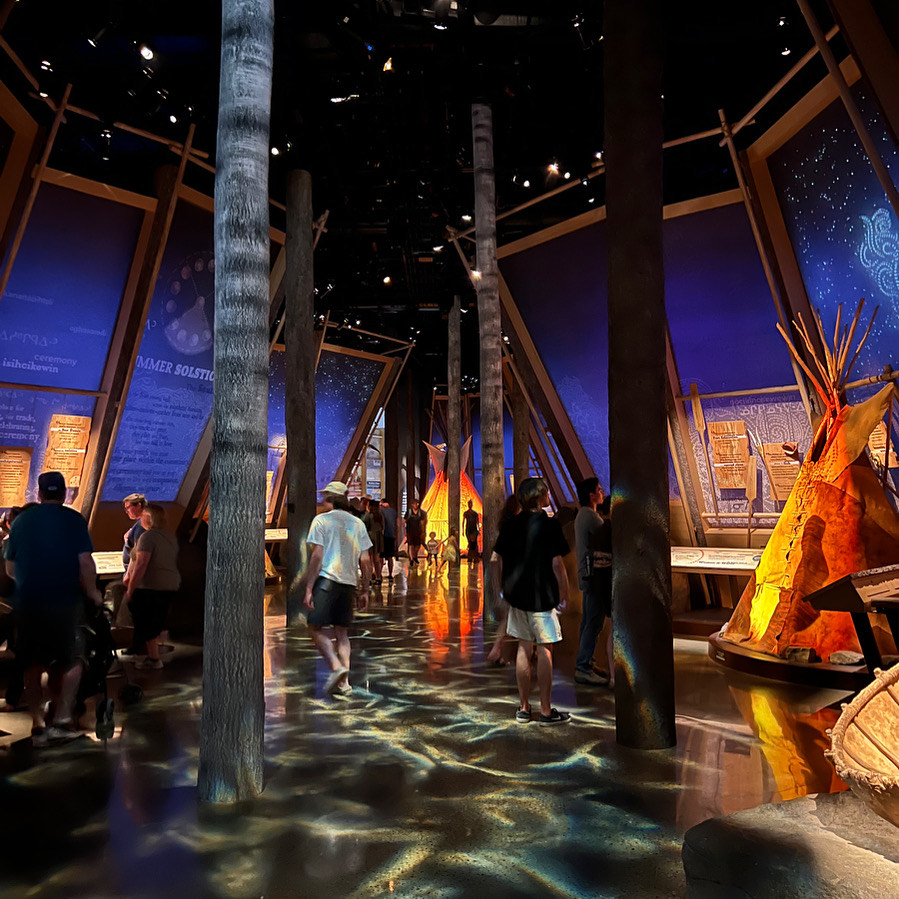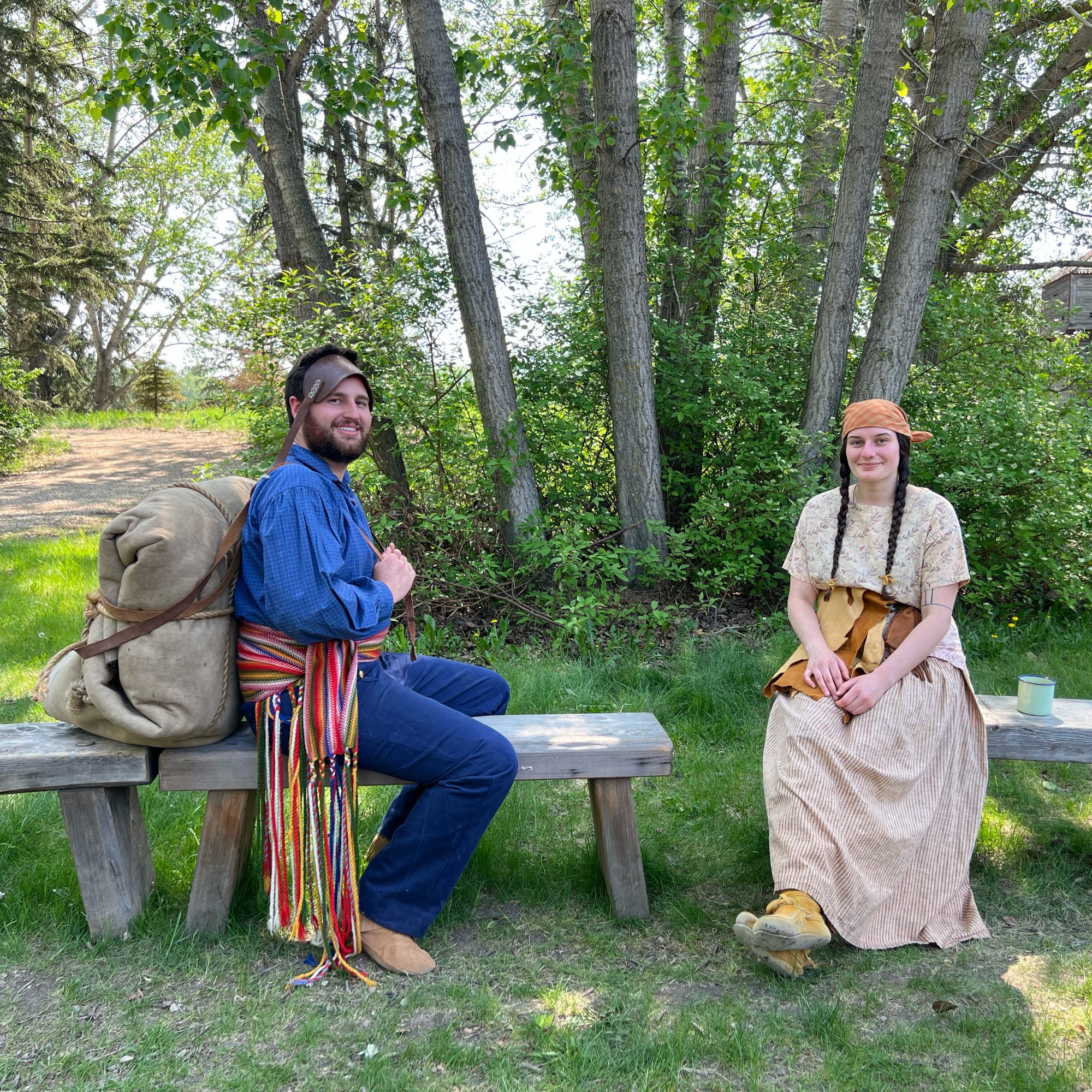
On National Indigenous People’s Day, throughout the week, and during the rest of Indigenous History Month, Fort Edmonton Park and the Indigenous Peoples Experience (IPE) will be putting on specialized programming focusing on connecting people with the cultures and history of the First Nations, Métis and Inuit peoples.
But Indigenous narratives coordinator Evert Poor stresses that “we’re Indigenous here every day” and that year-round, the park and the IPE remain safe places for people to come, learn, and listen.
Over the past couple of years, Evert Poor has seen the IPE create profound experiences for people connecting with Indigenous culture and history.
“We had a lady come from Vancouver with her son and her grandchildren,” Poor says. “They really had thought they were Italian, and they did a DNA test. They found out that they actually had an Indigenous ancestry. She came into the [Métis] cabin, she looked in the corner, and she said, ‘Those are my grandparents on the wall.’”
“We’ve shared some information with her so that she can reconnect to her community and who she is as a person.”
Poor says that this story isn’t an uncommon one amongst Indigenous people, especially Métis.
“I had a gentleman earlier this year that was Métis, but he was not connected to his culture. He said his father did everything possible not to be recognized as having any connection made to [his] Indigenous ancestry.”
Poor says that there were many reasons for Métis people to conceal their connection and their heritage, especially after the Red River Rebellion. “It was actually for some people a death sentence to be Métis,” Poor says, “You could actually be killed in adversity, and you were persecuted for it.”
And upon seeing the displays at the IPE, the one man “was very moved by that display of Métis history and such and really felt quite angry that he had been deprived of that history,” says Poor. “So that was very memorable for me. I remember that very well, that connection he made with his ancestry and the significance of it.”

Poor himself is Saulteaux-Métis and recalls his own experience with family concealing their Indigenous heritage. While Poor’s mother “spoke about her Indigenous ancestry all the time,” the other side of his family was a different story. “My father is 92 years old. He is of Métis ancestry. He spoke about it two years ago, the first time in his life that he ever shared it with me — that he had that ancestry.”
The IPE remains an important place for people to connect with their own heritage and culture, but also for people who don’t share that heritage to come and be exposed to the culture.
“You can go to a lot of communities that have a Chinatown. A lot of people have an Italian community, they have a Southeast Asian community, but there is no Indigenous town. There’s nowhere you can go to experience Indigenous culture and history or actually meet and experience what and who these people are.”
For Poor, National Indigenous People’s Day is an opportunity for people who do not have that exposure to go out and get it. “It’s an opportunity to celebrate and recognize our culture.”
“For the rest of the week, we basically do a little bit more than we normally do,” Poor says. Activities include putting up Tipis for a public demonstration on Thursday, establishing an Indigenous urban reserve off 1920 and 1905 Street on Friday, scraping out a hide on Saturday, and setting up a Métis Cabin outside the IPE. There will also be a 30-foot Tipi set up over the weekend.
“We traditionally do at least one hide every year, and that is usually an elk, and we do it traditionally, basically flushing, scraping, and then tanning and smoking the hide,” Poor says. “And this year, we’re actually doing a moose.”
But as Poor says, this is just one week of the month in an entire year of Indigenous-focused programming that the IPE and Fort Edmonton Park put on.
Learn and connect with Indigenous Culture and History and Fort Edmonton Park’s Indigenous Peoples Experience.





